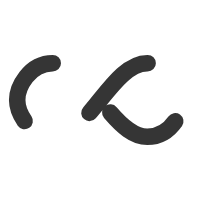In the vast world of finance, bond markets hold a significant place due to their size and impact on the global economy. Central to understanding these markets is the concept of the yield curve—a graph that plots the interest rates of bonds having equal credit quality but differing maturity dates. For bond traders, the yield curve is not just a representation of rates but a vital economic indicator that offers insights into future interest rate changes and economic shifts.
This article aims to equip bond traders with an in-depth understanding of how yield curve dynamics can be utilized in online trading to enhance decision-making and trading strategies. By integrating yield curve analysis into their trading toolbox, traders can gain a competitive edge in predicting market movements and optimizing their investments.
The Basics of the Yield Curve
What is the Yield Curve?
At its core, the yield curve is a graph that represents the yields of similar-quality bonds across different maturities. Typically, the curve plots yields on the vertical axis against the time to maturity on the horizontal axis, providing a snapshot of how the market perceives future interest rates and economic conditions.
Types of Yield Curves
Yield curves come in various shapes, each indicating different market conditions:
- Normal Yield Curve: Characterized by higher yields for bonds with longer maturities, suggesting economic growth expectations.
- Inverted Yield Curve: Occurs when long-term debts have a lower yield than short-term debts, often predicting an economic downturn.
- Flat Yield Curve: This signifies uncertainty in the economy, with similar yields across different maturities.
Understanding these curves is crucial for traders as they reflect the collective outlook of all market participants regarding future interest rates and economic conditions.
Economic Indicators and the Yield Curve
Influence of Economic Indicators
The shape of the yield curve is profoundly influenced by key economic indicators such as GDP growth, inflation rates, and unemployment figures. For instance, strong GDP growth might steepen the curve as investors demand higher yields for long-term bonds, anticipating rising interest rates.
Central Bank Policies
Central banks are pivotal in shaping the yield curve through monetary policy adjustments. Decisions on interest rates or quantitative easing immediately affect bond yields, altering the curve’s shape. For example, when a central bank lowers interest rates, short-term bond yields usually drop, potentially flattening or even inverting the curve.
Historical Case Studies
Examining past instances, such as the 2008 financial crisis or the 2020 economic downturn due to the pandemic, shows how the yield curve reacted to different economic shocks. These case studies provide practical insights for traders on what to expect in similar future situations.
Yield Curve as a Predictor of Economic Health
Forecasting Tool for Traders
Traders use the yield curve to anticipate market trends and potential economic turning points. An inverted yield curve, for instance, has historically been a precursor to recessions, making it a critical tool for risk management and investment strategy.
Historical Correlation with Recessions
The link between yield curve inversions and subsequent recessions is well-documented. This provides traders with a predictive tool to gauge economic health and adjust their trading strategies accordingly.
Broader Trading Strategies
Incorporating yield curve analysis into broader trading strategies allows traders to position themselves during different economic cycles better, enhancing their ability to profit and protect their investments.
Strategies for Trading Bonds Online Using the Yield Curve
Practical Online Trading Tips
Modern online trading platforms offer tools and resources to help traders effectively leverage yield curve analysis. Real-time data feeds, interactive charts, and automated alerts are invaluable for tracking yield curve movements and economic indicators.
Incorporating Yield Curve in Trading Decisions
Understanding the implications of different yield curve shapes can help traders make informed decisions about buying or selling bonds. For example, a steepening curve may suggest a good time to buy long-term bonds, expecting their value to increase as yields drop.
Importance of Real-time Updates
Staying updated with real-time economic news and yield curve changes is crucial in the fast-paced world of online trading. Economic calendars and market news feeds integrated into trading platforms are essential tools that enable traders to react swiftly to market changes.
Conclusion
Mastering the dynamics of the yield curve is essential for bond traders to navigate the market’s complexities and capitalize on economic indicators. By applying the insights from yield curve analysis to their online trading strategies, traders can enhance their forecasting abilities and market positioning.
To further explore how yield curve dynamics can benefit your trading strategies or for more personalized trading advice, consider subscribing to our newsletter or seeking specialized guidance on bond trading.




